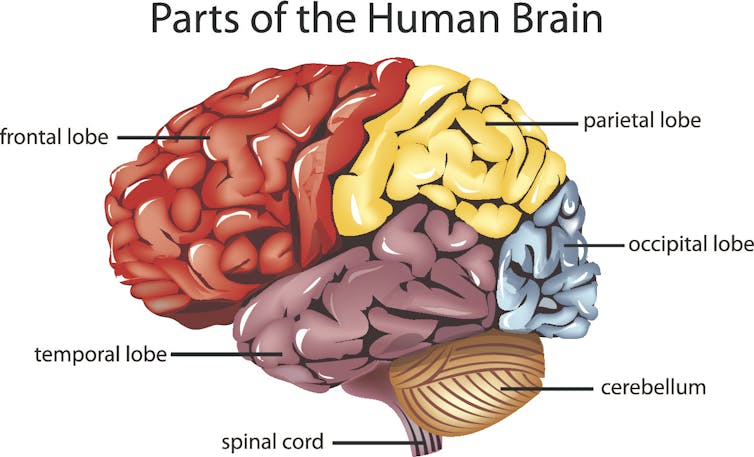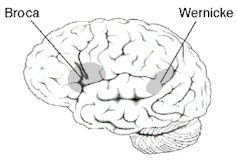If I had been asked 15 years ago to write a short piece about what the different parts of the brain did, it would have been a fairly straightforward task. Not any more.
Over the last 15 years, the methods used to study the brain have advanced significantly, and with this so has our understanding. Which makes the task of explaining the most complex organ in the body, well, complex.
Back to basics
The structural anatomy of the brain is certainly well defined and the more basic of our functions have been generally well mapped. The “lower levels,” such as the brainstem, regulate functions such as heart rate, breathing, and maintaining consciousness.
And the cerebellum is critical for the control and regulation of movement. While it was thought that this was its sole function, more recently the cerebellum has also been shown to have a role in so-called “higher functions” such as cognition and emotion.

As we move to the “higher levels” of the brain, namely the cerebral cortex, where more complex functions come into play, the assignment of function to structure becomes decidedly less distinct.
Different hemispheres
The cortex is structurally divided into two hemispheres (left and right) each with four lobes (occipital, parietal, temporal and frontal).
Brain functions, such as visual perception, language, memory, spatial ability and problem solving, have been traditionally allocated to one such lobe and/or hemisphere of the brain.

This has led to a number of misnomers regarding brain function, the most popular of which is the commonly held belief that there is a distinction between the left “logical” brain and the right “creative” brain. As discussed below, such complex behaviours are not determined by a specific brain region, or even a specific hemisphere.
The conceptualisation of an almost one-to-one relationship between structure and function was largely a result of lesion studies, where damage to a specific part of the brain resulted in impairments in a particular function. But as our techniques of assessing the brain became more sophisticated this approach was shown to be somewhat simplistic.
We have come a long way from the phrenology of Franz Gall in the 19th century, in which characteristics such as secretiveness, self-esteem and wonder were determined by the shape of the skull (thought to be a proxy of brain size), and the 20th century reliance on lesion studies to determine the function of the different areas of the brain.
Connected network
We are now developing an understanding that complex, higher-level brain functions are a result of a number of brain areas working together, in what are termed “networks”.
This has been a result of techniques such as Magnetic Resonance Imaging (MRI), which allows us to look at the entirety of brain regions involved in certain functions, with newer applications allowing the visualisation of connections between these brain regions (i.e. Diffusion Tensor Imaging).

This is not to say that there is no separation of function throughout the brain. Rather, while there are brain regions that carry out specialised functions, they are now thought to do so in concert with other brain regions via network connections.
To conceptualise this, you could think of the brain as a exceptionally efficient rail network where certain train stations perform specialised duties but they do so in conjunction with other stations, and they are connected and “communicate” via the rail network.
Language can provide a good example of how this occurs in the brain. Language is often thought of as a solely “left brain” function and, while there is a degree of lateralisation, this is certainly not the whole story.
There are specific regions in the dominant (usually left) hemisphere that are integral in the production and comprehension of speech, i.e. Broca’s area and Wernicke’s area respectively.

But the non-dominant (usually right) hemisphere is also involved in language, and is thought to be important in the recognition and production of the emotional context of speech.
Additionally, the “language network” involves a number of other dominant “left” hemisphere regions, including prefrontal cortex, premotor cortex, supplementary motor area, as well as regions of the parietal and temporal lobes.
These brain regions work together to perform higher order aspects of language such as the application of the correct syntax to speech, as well as the mapping of words to their meaning.
While there are certain highly-specialised brain regions for language, they are still part of an extensive network of brain regions which work together to produce this complex function.
In addition, the brain is not fixed in its functioning. It is plastic and, if needed due to illness or injury, it can recruit new regions and/or networks to take over the functions of the damaged areas.
And so we believe it is a complex interaction between structure and function that best describes what the different part of the brain do - at least for now …
See more Explainer articles on The Conversation.

